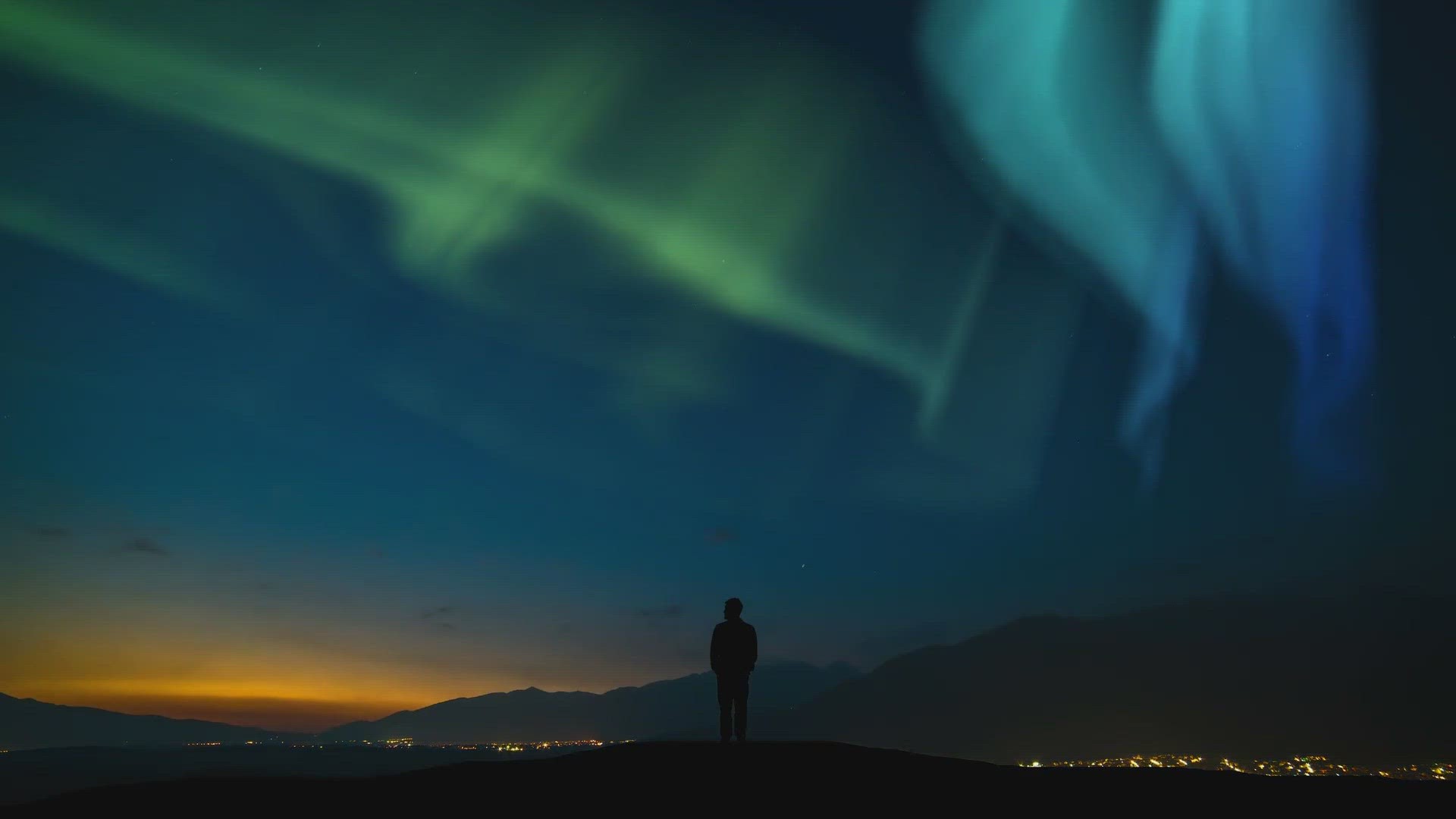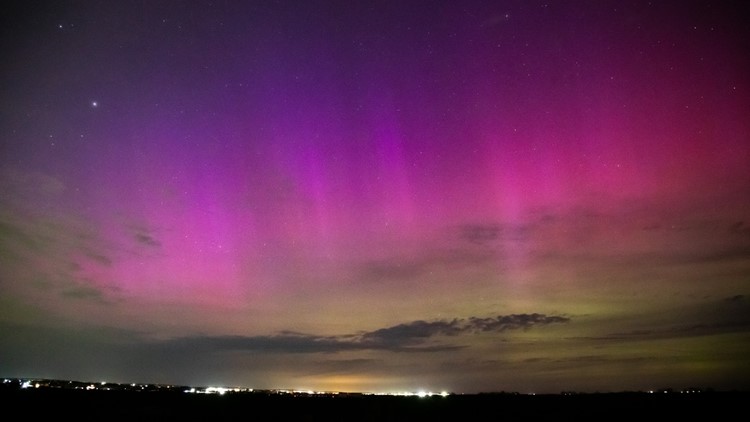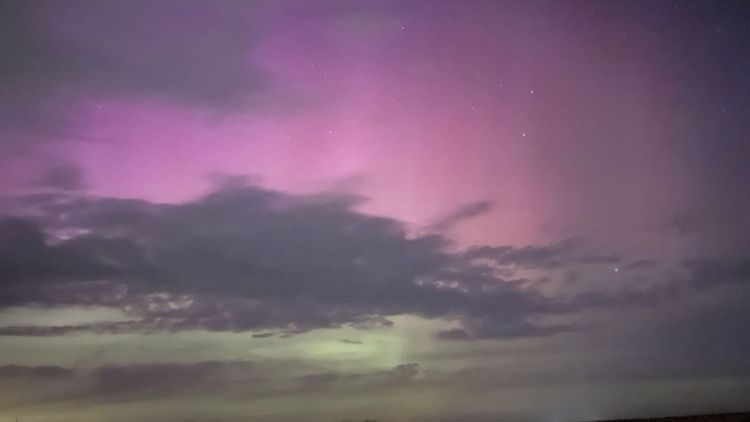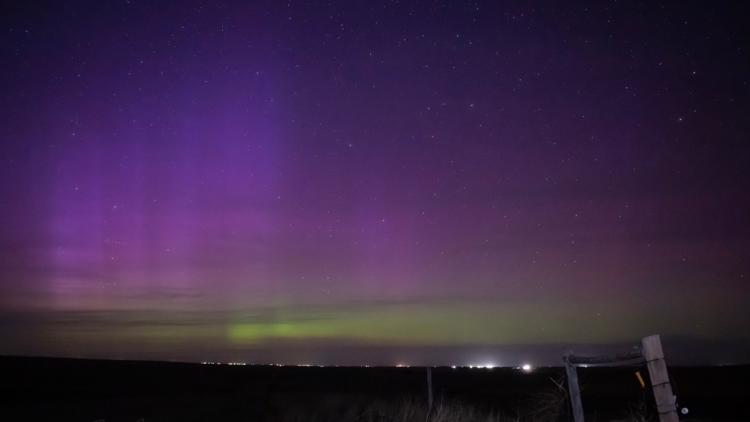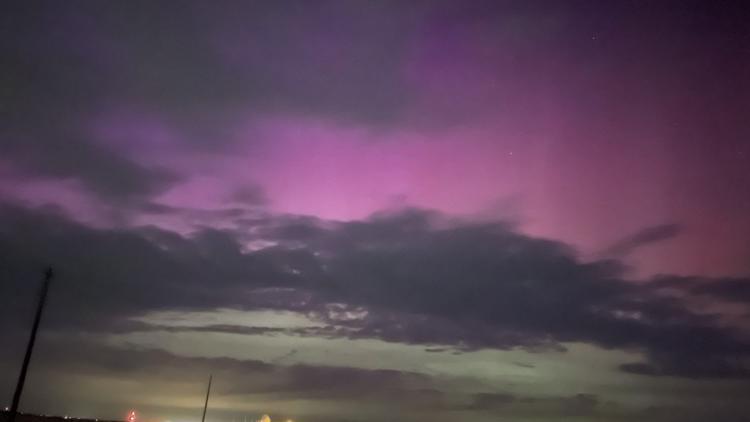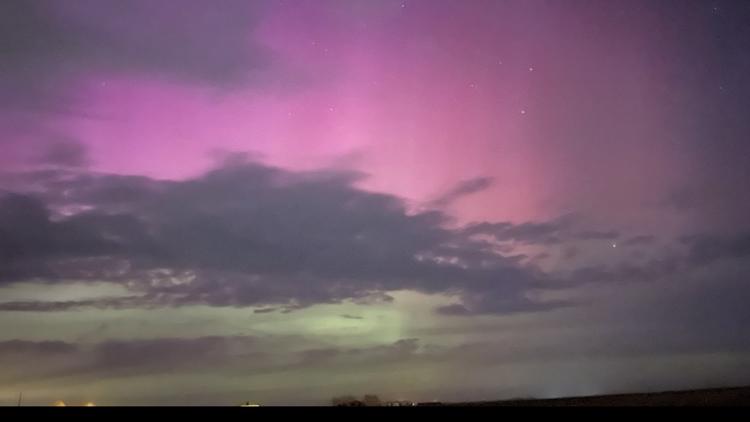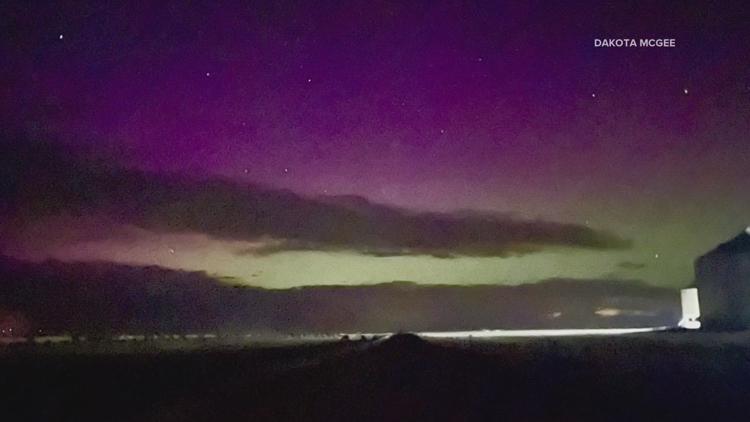COLORADO, USA — The aurora borealis, or northern lights, might be one of the most spectacular visual displays in all of nature.
Those dancing green ribbons and ripples of energy are formed when charged particles from the sun hit the earth’s magnetitic field near the north pole.
“If you are fortunate enough to be directly under the thing, it’s pretty spectacular,” said Rob Steenburgh, a forecaster with NOAA's Space Weather Prediction Center in Boulder.
He said the aurora’s visual display still looks cool towards the south in places like Colorado, but it usually has a very different look to it. We typically see them as a green and pink glow on the northern horizon. That’s because we’re just seeing the side of the aurora from a great distance.
The aurora starts in the northern latitudes but the stronger the storm, the further south the energy pushes," he said. "So, we need strong storms to be able to see them in Colorado."
Steenburgh said the strength of solar storms is rated like hurricanes. This week’s storm was a G2, but it peaked into G3 levels for about three hours. The G is for geomagnetic storm.
The strongest solar storm of the year was a G4 in March. 9NEWS viewer Erin Moe captured a timelapse that showed the dancing pillars, but they were still from a side angle on the horizon.
A G5 storm is the strongest. If one of those should come along, we would have a chance to see the ribbons directly overhead in Colorado, but those storms are rare.
The last one was on Halloween of 2003. NCAR scientist Stan Solomon captured that event directly over the Boulder Flatirons.


Steenburgh said G5 solar storms can only be predicted a few days in advance, and there's really no way to say if there will be one in the current solar cycle. There wasn't one in the previous solar cycle that went from December 2008 to December 2019.
We are just three years into Solar Cycle 25 which is expected to peak sometime in 2024 or 2025, but G5s don't necessarily happen at the peak.
The Halloween 2003 storms came toward the end of Solar Cycle 23.
"Those massive solar flares that are big enough to create a G5 storm are rare enough to occur at all, but then to affect Earth, they also have to eject in the right direction," said Steenburgh.
He said he was on duty at the Space Weather Prediction Center in Boulder when he detected one in July of 2012. But that one was not pointing at Earth.
“That one was absolutely significant. Would have been a five easy and probably would have been a significant impact here on earth,” he said. "So yes, they are happening. We've just been lucky that over the last 20 years, they haven't been aimed at Earth."
GET THE FORECAST
If you want to get a heads-up about incoming solar storms and their strengths, you can get the forecast directly from the Space Weather Prediction Center website. They issue a three-day solar storm forecast, a visual storm simulation and a written forecast discussion.
You can also sign up to receive watches, warnings, and alerts to be sent to your email.
SUGGESTED VIDEOS: Colorado Climate
Northern lights in Colorado
9NEWS+
9NEWS+ has multiple live daily shows including 9NEWS Mornings, Next with Kyle Clark and 9NEWS+ Daily, an original streaming program. 9NEWS+ is where you can watch live breaking news, weather updates, and press conferences. You can also replay recent newscasts and find videos on demand of our top stories, local politics, investigations and Colorado specific features.
To download 9NEWS+ on Roku search for KUSA.
To download 9NEWS+ on Fire TV search for 9NEWS.

